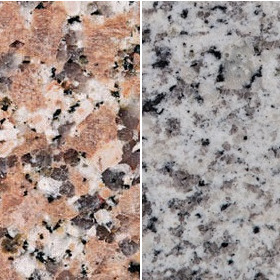
Nobles Rest public park is situated at the end of Maude Street, and is used a great deal by local workers at lunch times, for picnics by families and some public functions. There are magnificent trees and floral beds, a scented garden, wild flower meadow and grass maze.
The park was donated by Mary Ellen Noble in 1929, as a place for the aged and the young to enjoy. It was created to commemorate her husband, local surgeon Samuel Clarke Noble. Mrs Noble also donated a park keepers cottage/bungalow for the upkeep of the park, although this is now derelict.
We are here to look at the granite memorial stone at the posted coordinates
Logging Requirements (Questions to Answer)
In order to log a find against this EarthCache, you will need to visit GZ and make some observations and then answer some questions and send answers to me via my Geocaching profile or through the Messenger Centre.
1. Take a look at the memorial stone and describe what you can see - describe the colour, shape and size of any crystals you can see.
2. Given your answer to Q1. (A) Is the feldspar Orthoclase or Plagioclase, (B) What may be present in the feldspar to give it that colour.
3. On one side of the memorial there is a area that does not have any feldspar present. Described its shape, size and which direction is it facing.
4. Compulsory task: Include in your log a photograph of you, your GPS or another identifiable item near GZ, taking care not to include anything in the photo that may give away your answers.
Granite
Granite is a common type of igneous rock. Igneous rock is one of the three main rock types , the others being sedimentary and metamorphic. Igneous rock is formed through the cooling and solidification of magma or lava. Igneous rock may form with or without crystallisation either below the surface as intrusive (plutonic) rocks or on the surface as extrusive (volcanic) rocks. Granite can be white, pink, or gray in colour, depending on their mineralogy. Granitic rocks mainly consist of feldspar, quartz, mica and amphibole minerals, which form an interlocking matrix of feldspar and quartz with scattered darker biotite mica and amphibole (often hornblende) peppering the lighter colour minerals. The size of feldspar crystals in granite is directly related to the speed of cooling. When magma cools slowly beneath the Earth's surface, feldspar crystals have more time to grow larger (greater than 2mm in size), resulting in coarse-grained granite. In contrast, rapid cooling at the surface leads to smaller feldspar crystals, producing fine-grained or even glassy rocks like obsidian.

The quartz is typically transparent or translucent - not unlike glass. The mica is often black or brown but sometimes silvery in nature.
The pink colour of feldspar in granite is primarily caused by the presence of a mineral called orthoclase feldspar. Orthoclase feldspar contains small amounts of impurities, such as iron or manganese, which can give it a pink hue. The gray colour of plagioclase feldspar is mainly a result of its mineral composition, which includes a mix of sodium, calcium, and aluminum ions within its structure.